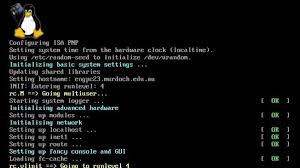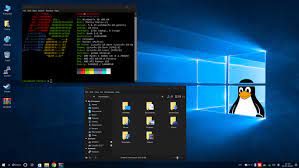Get Your Free Download of SUSE Linux OS Today!
Experience the Power of SUSE Linux with a Free Download
SUSE Linux is a leading open-source operating system known for its stability, security, and versatility. Whether you are a seasoned Linux user or new to the world of open-source software, SUSE Linux offers a robust platform that caters to a wide range of needs.
With a focus on enterprise-grade solutions and community-driven innovation, SUSE Linux provides users with a reliable and feature-rich environment for their computing needs. From servers to desktops, SUSE Linux is designed to deliver high performance and flexibility.
Key Features of SUSE Linux:
- Enterprise-level security features to protect your data and privacy
- Advanced package management system for easy software installation and updates
- Built-in support for virtualization technologies for seamless integration with cloud services
- User-friendly interface with customisation options to suit your preferences
- Wide range of applications and tools available in the software repositories
How to Get Started:
To experience the power of SUSE Linux, you can download the latest version of the operating system for free from the official SUSE website. Simply follow these steps:
- Visit the official SUSE website at www.suse.com.
- Navigate to the Downloads section.
- Select the edition of SUSE Linux that best suits your requirements (e.g., SUSE Enterprise Server, SUSE Leap).
- Choose your preferred download method (ISO image, USB installer).
- Follow the on-screen instructions to complete the download process.
Once you have downloaded SUSE Linux, you can install it on your computer or server and start exploring its features and capabilities. Join the vibrant community of SUSE users and developers to share knowledge, seek help, and contribute to the ongoing development of this exceptional operating system.
Discover the power of open-source computing with SUSE Linux OS. Download your free copy today and unleash endless possibilities for innovation and productivity.
Top 7 FAQs About Downloading and Using SUSE Linux OS for Free
- 1. How can I download SUSE Linux OS for free?
- 2. Is SUSE Linux OS free for personal use?
- 3. What are the system requirements to run SUSE Linux OS?
- 4. Can I install SUSE Linux OS alongside Windows or another operating system?
- 5. Does SUSE Linux OS come with technical support for free users?
- 6. Are there any limitations on the usage of the free version of SUSE Linux OS?
- 7. How do I create a bootable USB drive to install SUSE Linux OS?
1. How can I download SUSE Linux OS for free?
To download SUSE Linux OS for free, you can visit the official SUSE website and navigate to the Downloads section. From there, you can choose the edition of SUSE Linux that best suits your needs, such as SUSE Enterprise Server or SUSE Leap. Select your preferred download method, whether it’s an ISO image or a USB installer, and follow the on-screen instructions to complete the download process. By following these simple steps, you can get started with SUSE Linux OS without any cost and begin exploring its powerful features and capabilities.
2. Is SUSE Linux OS free for personal use?
Yes, SUSE Linux OS is free for personal use. Users can download and install SUSE Linux on their personal computers without any cost. SUSE Linux offers a range of editions tailored to different user needs, including a free version that provides access to a wealth of open-source software and tools. Whether you are looking to explore the world of Linux or seeking a reliable operating system for your personal computing needs, SUSE Linux offers a feature-rich platform that is both powerful and cost-effective for individual users.
3. What are the system requirements to run SUSE Linux OS?
To run SUSE Linux OS smoothly on your system, it is essential to meet the minimum system requirements. Typically, SUSE Linux requires a modern processor (such as Intel Core or AMD Ryzen), a minimum of 2GB RAM (though 4GB or more is recommended for optimal performance), at least 20GB of available disk space for installation, and a compatible graphics card for graphical interfaces. Additionally, ensure that your system meets the hardware compatibility list provided by SUSE to avoid any compatibility issues. By meeting these system requirements, you can enjoy the full potential of SUSE Linux OS and its wide range of features and functionalities.
4. Can I install SUSE Linux OS alongside Windows or another operating system?
Yes, you can install SUSE Linux OS alongside Windows or another operating system using a method called dual-booting. Dual-booting allows you to choose which operating system to run when you start your computer, giving you the flexibility to switch between them as needed. During the installation process of SUSE Linux, you will have the option to create a separate partition on your hard drive for the Linux OS without affecting your existing Windows installation. This enables you to enjoy the benefits of both operating systems on the same machine. Just follow the on-screen instructions carefully to set up a dual-boot configuration that suits your requirements.
5. Does SUSE Linux OS come with technical support for free users?
For users of SUSE Linux OS who opt for the free version, technical support is typically not included as part of the package. However, SUSE offers various resources such as community forums, documentation, and knowledge bases that can assist users in troubleshooting issues and finding solutions independently. For those requiring dedicated technical support, SUSE provides different support plans that cater to specific needs, ensuring that users have access to expert assistance when needed.
6. Are there any limitations on the usage of the free version of SUSE Linux OS?
When it comes to the free version of SUSE Linux OS, users often wonder about any limitations on its usage. The free version of SUSE Linux OS, typically known as SUSE Linux Enterprise Server (SLES) for personal use or openSUSE Leap for general users, generally does not impose significant restrictions on usage. Users can freely download, install, and use the operating system for personal or non-commercial purposes without any licensing fees. However, for enterprise or commercial use cases requiring additional features, support, or certifications, users may need to consider upgrading to a paid subscription of SUSE Linux Enterprise Server to access advanced functionalities and professional support services.
7. How do I create a bootable USB drive to install SUSE Linux OS?
To create a bootable USB drive for installing SUSE Linux OS, you can follow a simple process that involves using a utility like Etcher or Rufus. First, download the SUSE Linux ISO image from the official website. Then, insert your USB drive into your computer and open the chosen utility. Select the SUSE Linux ISO file and choose your USB drive as the target device. Proceed to start the flashing process, which will copy the necessary files to make your USB drive bootable. Once completed, you can safely eject the USB drive and use it to install SUSE Linux OS on your desired system.








